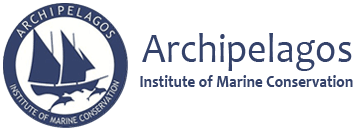Echinoderms play an important role in marine, benthic ecosystems. They can be both carnivorous or, most importantly, grazers. The grazing of sea urchins specifically reduces the rate of colonization on bare rocks by settling organisms. This keeps algae in check, thereby enhancing the biodiversity of coral reefs. Despite that, echinoderms sometimes have large population swings which can cause marked consequences for ecosystems. An increase in sea urchin numbers can cause overgrazing in a certain area, leaving it barren of algae-based life. As such, it is of paramount importance to make sure that balance exists in echinoderm populations.
Most notably, a slight decline of echinoderm populations has been noted. They are sensitive to excess absorption of CO2 by the ocean, which induces ocean acidification and ocean warming. That is why a team of research interns of Archipelagos once again journeyed to the Icarian Sea and assessed multiple bays, beaches and ports to document the presence of echinoderm species, as well as to verify how many specimens of certain species were found.
The procedure was simple enough: snorkeling in an established area while counting as many of the phylum Echinodermata as possible. The species usually most found in the Eastern Aegean Sea (which includes the Icarian Sea) are: black sea urchin (Arbacia lixula),
After many sessions were done, the results obtained were quite interesting: in locations such as the outskirt beaches of the island the number of echinoderms present was quite low, but in Vathi, a local port and the main town of Samos, the echinoderm count was higher than any other area on the island. The abundant specimens were the two common species of sea urchins in the Aegean Sea, the black and purple sea urchins. This is very intriguing because the port has a frequent traffic of boats and marine vessels, which usually leads one to assume that the quality of the seawater would be worse than in any other beach.
Therefore, it is safe to assume that the port must have a special factor that contributes to the larger presence of sea urchins in the area. Our hypothesis includes; clean water springs that sprout from underwater, the presence of nutrients/algae that allow the sea urchins to sustainably habit those waters, or simply the absence of natural predators in the port.
With these new findings, Archipelagos Institute of Marine Conservation has acquired a better understanding of the general echinoderm population and their location preferences. This knowledge certainly proves useful in comprehending the ecology of these creatures, allowing a greater grasp in the Icarian marine ecosystem and in helping us to preserve marine life as efficiently as possible.
José Salgado, Faculty of Science of the University of Lisbon, Portugal


